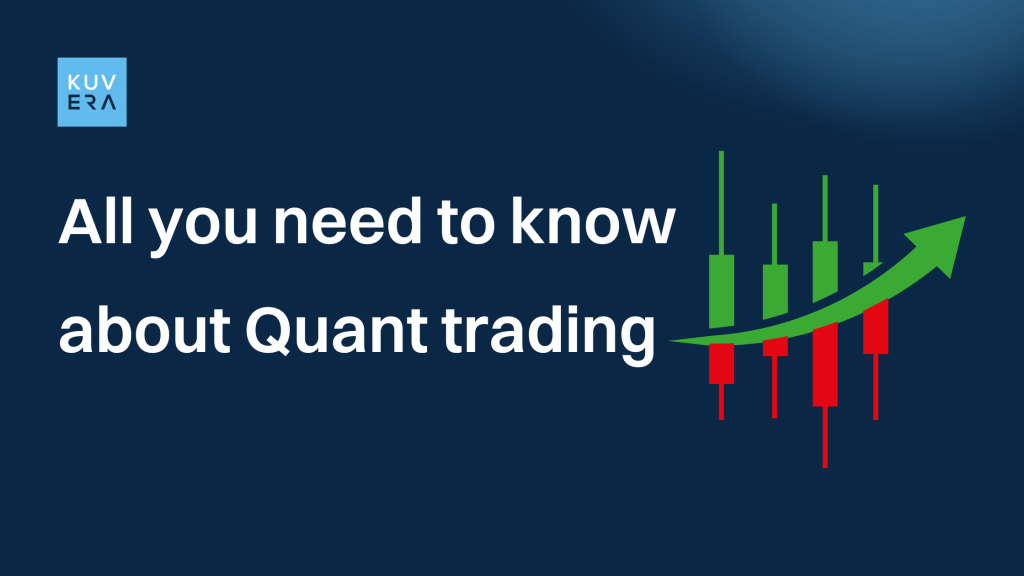Curious about a smarter, tech-driven way of trading? Imagine algorithms making decisions instead of humans. That’s quantitative trading, or “quant” trading for short. Let’s break down the upsides and downsides of this cutting-edge approach to investing.
Imagine you’re at a bakery, and you want to buy cupcakes to sell later. You notice that when it’s sunny, people buy more cupcakes, but when it rains, they buy less. Now, imagine if you had a super-smart friend who could tell you exactly when it’s going to be sunny or rainy. You could buy cupcakes when it’s sunny and sell them when it’s rainy to make a profit.
Quantitative trading is a bit like that smart friend but for the stock market. Instead of cupcakes and weather, it uses fancy math and computers to predict when it’s a good time to buy or sell stocks. It looks at a lot of numbers from the past to figure out patterns and then uses those patterns to make decisions about buying and selling stocks.
The cool part is that it doesn’t get scared or excited like people do – it just follows its math rules. Sometimes, it can make money very quickly because it’s so fast at making decisions. But, just like the weather might suddenly change, the stock market can also have surprises that smart math might not predict.
So, think of quantitative trading as a super-smart helper for investing. It uses math and computers to make decisions about buying and selling stocks, trying to make money by spotting patterns in the past.
Pros of Quantitative Trading
- Speed and Precision: Quant trading is like a cheetah in the trading jungle. It’s super-fast, reacting to market changes in a flash, potentially boosting profits.
- No Emotions, Just Logic: Say goodbye to emotional rollercoasters. Quant trading sticks to a game plan, following rules based on data and logic, not mood swings.
- Data-Powered Predictions: These algorithms are data wizards. They crunch numbers from the past to predict future trends, spotting opportunities that escape human eyes.
- Smart Risk Management: Quantitative strategies are like safety nets. They spread investments smartly, reducing the blow if something unexpected happens.
- Always On the Clock: While you sleep, quant trading is wide awake. It doesn’t clock out, ensuring it spots chances 24/7, no matter where you are.
Cons of Quantitative Trading
- It’s Complex: Think coding and complex math. Creating, testing, and maintaining these strategies aren’t beginner’s play.
- Data’s King: Garbage in, garbage out. If data is wrong, algorithms make wrong choices. So, data quality is vital.
- The Over-Optimization Snag: Too much fine-tuning can backfire. If algorithms live too much in the past, they might struggle in the present.
- Unpredictable Surprises: Quant models can’t foresee black swans – rare, unexpected events shaking up the markets.
- No Gut Feeling: Algorithms can’t feel the market vibes. They might ignore the “feelings” that human traders catch.
Conclusion
Quantitative trading is like a cool fusion of math and tech, changing how investments roll. It’s speedy, efficient, but it isn’t a magic potion. There’s complexity and potential pitfalls to navigate. So, whether you’re a math whiz or just dipping your toes, understanding the game and managing risks are your golden rules.
From tech geeks to finance pros, quantitative trading is a peek into the future of investing – where codes and algorithms give us a new way to conquer the market jungle.
Interested in how we think about the markets?
Read more: Zen And The Art Of Investing
Watch/hear on YouTube:
Start investing through a platform that brings goal planning and investing to your fingertips. Visit Kuvera.in to discover Direct Plans and Fixed Deposits and start investing today.

